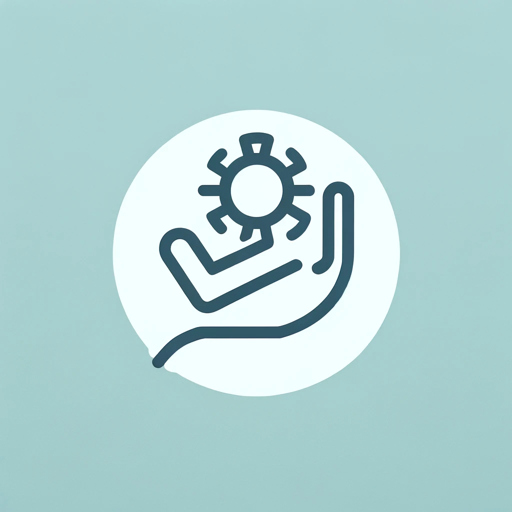Evidence-Based Practice-Evidence-Based Practice analysis tool
AI-powered evidence analysis for healthcare
Analyze this clinical trial.
Summarize these study findings.
Can you score this research?
Draft a tweet about this article.
mbe (spanish)
ebm (english)
Analiza este estudio
critical reading
lectura crítica
Related Tools
Load More
EBM SEARCH
Finds, summarizes EBM literature, suggests keywords and search strategies.

EBM Systematic Review Guide
Supports doctors in EBM reviews and evaluations, in Vietnamese and English.

Evidence-based Clinical Knowledgebase
I can provide evidence-based information based on latest and authoritative data.

Occupational Therapist Expert GPT
A robust assistant for OTs creating patient-focused plans.

Parenting Partner: Evidence-Based Resources
A supportive guide for parents seeking advice on child upbringing. Designed to partner with you in making wise decisions for raising kind, intelligent, successful, creative, and empathetic children.

Finds peer-reviewed research articles.
Finds peer-reviewed research articles.
20.0 / 5 (200 votes)
Introduction to Evidence-Based Practice
Evidence-Based Practice (EBP) is designed to improve the interpretation and application of scientific studies in the health sector. Its primary function is to ensure that healthcare decisions are informed by the best available evidence, integrating clinical expertise and patient values. EBP follows a structured approach to evaluate research, focusing on the reliability and applicability of findings. For example, EBP might be used by a clinical team to assess the latest treatments for diabetes, ensuring that their recommendations are based on rigorous, up-to-date research.

Main Functions of Evidence-Based Practice
Critical Appraisal of Studies
Example
A systematic review of randomized controlled trials (RCTs) for a new cancer drug.
Scenario
A research team uses EBP to critically appraise a series of RCTs to determine the efficacy and safety of a new cancer drug, ensuring that their findings are based on high-quality evidence.
Guideline Development
Example
Creating clinical guidelines for managing hypertension.
Scenario
Medical professionals use EBP to develop guidelines for hypertension management, integrating the latest research findings with clinical expertise and patient preferences to provide comprehensive care recommendations.
Educational Resource
Example
Training healthcare providers on the latest evidence-based practices.
Scenario
Hospitals and educational institutions use EBP to train healthcare providers, ensuring they are up-to-date with the latest evidence and best practices in their field.
Ideal Users of Evidence-Based Practice
Healthcare Providers
Doctors, nurses, and other healthcare professionals who need to stay informed about the latest research and apply it in clinical practice. They benefit from EBP by having access to reliable, up-to-date information that helps them make better clinical decisions.
Researchers and Academics
Individuals involved in medical research or teaching who require a rigorous framework for evaluating studies. EBP supports their work by providing a structured approach to assess the quality and relevance of scientific evidence.

Using Evidence-Based Practice
Visit aichatonline.org for a free trial without login, also no need for ChatGPT Plus.
Start by visiting the website to access the Evidence-Based Practice tool. No login or ChatGPT Plus subscription is required to begin.
Upload the study or article for analysis.
Select the research article or study you wish to analyze and upload it to the platform.
Specify the type of analysis required.
Choose the specific analysis you need, such as clinical trials, observational studies, or systematic reviews.
Review the detailed summary and critique.
The tool provides a structured summary and critical review of the study, highlighting key methodological aspects, results, and conclusions.
Download and use the analysis for your purpose.
Once the analysis is complete, download the report for use in clinical practice, academic writing, or policy-making.
Try other advanced and practical GPTs
Instant Jewelry Designer
AI-powered jewelry design made personal

Visual Story Assistant
Transforming Ideas into Visual Narratives

Music Video Maestro
AI-powered music video creation assistant

Customer.io Liquid Helper
AI-powered Liquid code assistant for Customer.io.

Reflections Journal
AI-powered mindfulness and reflection.

English - German Formal Translator
AI-powered English to Formal German Translation

Myna Translator
AI-powered translation, simplified and contextual.

菜单翻译官
AI-powered menu translation with recommendations.

CSRD Chat
AI-powered Sustainability Reporting Simplified

Learn Anything
AI-powered learning for everyone.

GifGPT
AI-Powered GIF Creation Simplified

SuperApply's Job Search CoPilot
AI-powered tool for tailored job search documents.

- Research
- Education
- Healthcare
- Practice
- Policy
Evidence-Based Practice Q&A
What is Evidence-Based Practice?
Evidence-Based Practice is a tool designed to critically analyze scientific studies and provide detailed reviews, ensuring that clinical decisions are based on the best available evidence.
How can I access the Evidence-Based Practice tool?
You can access the tool by visiting aichatonline.org. It offers a free trial without the need for login or a ChatGPT Plus subscription.
What types of studies can be analyzed?
The tool can analyze various types of studies, including clinical trials, observational studies, systematic reviews, and meta-analyses.
What are the key features of the Evidence-Based Practice tool?
Key features include detailed methodological reviews, statistical analysis, practical applicability assessments, and structured summaries of study findings.
How does the tool ensure the accuracy of its analyses?
The tool follows a continuous improvement guide to identify and correct common errors, ensuring that analyses are accurate and reliable. It incorporates the latest advances in research methodology and best practices.